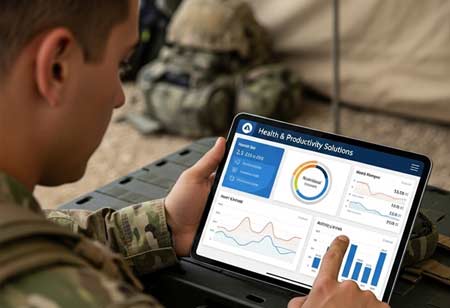Artificial intelligence is reshaping defense capabilities across Latin America, driving a shift toward more agile, data-driven, and technologically advanced military operations. Regional defense institutions increasingly recognize the value of AI-powered systems in enhancing situational awareness, automating surveillance, and strengthening cyber resilience. As Latin American countries modernize their defense infrastructure, AI integration is becoming a strategic priority to address traditional security challenges and emerging asymmetric threats. This evolution fosters greater collaboration between governments, research institutions, and technology providers, aiming to build robust, responsive, intelligent defense ecosystems tailored to the region’s unique operational needs.
Evolving Landscape of AI Integration in Defense
Incorporating artificial intelligence into defense systems has significantly transformed the strategic, operational, and tactical frameworks of military organizations worldwide. AI-powered defense solutions are increasingly being adopted to enhance decision-making, improve response times, and automate complex processes. The need for intelligent systems to continuously analyze large datasets and provide actionable insights is increasing. The need for real-time situational awareness, predictive analysis, and autonomous operations across land, air, sea, and cyber domains drives this shift.
Autonomous vehicles, unmanned aerial systems, intelligent surveillance, and AI-based cybersecurity protocols are among the most prominent applications gaining traction. As traditional defense mechanisms evolve, AI provides the sophistication and adaptability required to respond to dynamic and asymmetric threats. The market is shifting from hardware investments to data-driven, software-centric capabilities utilizing deep learning algorithms, neural networks, and machine learning. These trends indicate a growing confidence in the reliability and potential of AI to support mission-critical operations with precision and speed.
Addressing Key Operational Barriers Through Innovation
Implementing AI-powered solutions in defense operations is complex, but targeted innovations are meeting these challenges. One significant hurdle lies in integrating AI with legacy systems, often not designed to handle real-time data processing or autonomous functionalities. Modular AI architectures and middleware solutions have emerged, enabling seamless integration with existing infrastructures and facilitating gradual system modernization without requiring the overhaul of entire networks.
Another challenge is the concern over algorithmic transparency and accountability in decision-making processes. This is particularly important in high-stakes defense scenarios where the rationale behind AI-driven actions must be clearly understood. In response, developers are embedding explainable AI frameworks into defense systems to ensure that decision-making paths can be audited and validated, thereby maintaining operational trust and ensuring legal compliance.
Data availability and quality also present notable challenges, as defense environments frequently involve classified, sensitive, or incomplete information. To overcome this, synthetic data generation and federated learning models enable the training of AI systems without compromising data security or privacy. These innovations ensure data sufficiency and also support continuous learning across decentralized networks.
Cybersecurity remains a fundamental concern, particularly as AI systems become more interconnected and autonomous. In countering potential vulnerabilities, AI is also used defensively to monitor systems for anomalies, predict intrusions, and autonomously patch threats in real-time. This dual-use approach, leveraging AI as a tool and a defender, marks a proactive strategy for securing digital military ecosystems.
Recruiting and training skilled personnel to operate and maintain AI-driven systems presents operational challenges. In response, immersive training environments powered by AI, such as simulated battlefield scenarios and digital twins, are being introduced. These allow for rapid skill acquisition and scenario-based learning, preparing defense personnel to manage and collaborate with intelligent systems effectively.
Strategic Growth and Technological Leaps Enhancing Defense Ecosystems
AI-powered defense solutions open substantial opportunities across the defense ecosystem, generating value for multiple stakeholders, including military institutions, research organizations, policymakers, and defense technology providers. One of the most promising areas is the development of autonomous and semi-autonomous systems, which reduce human risk while enhancing the reach and capabilities of defense operations. These systems can operate in contested environments, perform persistent surveillance, and conduct precision strikes with minimal human intervention, increasing operational efficiency and mission success rates.
Advanced analytics and decision-support tools are enabling more effective command and control structures. AI systems can process data from sensors, satellite feeds, and intelligence sources to provide commanders with real-time operational insights. This shortens decision cycles and also increases the accuracy and relevance of mission planning. The ability to simulate and predict battlefield outcomes using AI-driven modeling further strengthens strategic foresight and resource allocation.
I optimize inventory, predict equipment maintenance needs, and manage transportation routes. In supply chain management and logistics, Predictive logistics ensures that defense forces maintain high readiness levels without overextending resources. Stakeholders benefit from increased efficiency, reduced operational costs, and more resilient support systems.
The cyber domain has seen a significant leap with AI-powered threat detection and response. AI systems can identify novel cyber threats by analyzing behavior patterns, allowing defense networks to react to previously unknown vulnerabilities with speed and accuracy. This proactive approach enhances the resilience of critical infrastructure and assures stakeholders of system reliability.
AI is also driving innovation in defense training and simulations. AI-powered virtual environments offer realistic combat training scenarios that adapt to trainees' actions, providing personalized feedback and performance assessments. These intelligent training systems help defense personnel improve cognitive and tactical skills while reducing training costs and time. This ensures a better-prepared force and also strengthens the overall human-machine collaboration dynamic.









